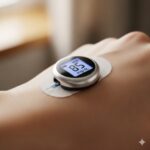Accuracy remains the cornerstone of effective blood glucose monitoring, directly influencing diabetes management decisions and outcomes. In 2025, notable advancements in both continuous glucose monitors (CGMs) and fingerstick meters have elevated the precision and usability of monitoring systems. The most accurate blood glucose monitors offer trustworthy readings, user-friendly interfaces, and connectivity that ensure safer and more informed glycemic control. This article delves into the latest comparative evaluations and clinical research to inform choices for optimal glucose monitoring.
Understanding Accuracy in Blood Glucose Monitors
Accuracy is generally expressed as the Mean Absolute Relative Difference (MARD), representing the average deviation of a device’s glucose readings from laboratory reference values. A MARD under 10% is regarded as highly accurate. Additionally, standards like ISO 15197 ensure devices meet essential accuracy requirements, supporting clinical safety.
Leading Devices in Accuracy
FreeStyle Libre 3
The FreeStyle Libre 3 sensor exhibits an outstanding MARD of approximately 7.9%, with clinical testing affirming that over 93% of readings lie within ±20 mg/dL or 20% of reference values. It supports seamless continuous monitoring for up to 15 days, requiring no fingerstick calibration, and offers real-time alerts and smart phone integration.
Dexcom G7
Dexcom G7 maintains close accuracy with a MARD near 8.2%, featuring rapid warm-up and predictive alerts that warn users before glucose drops to unsafe levels. Its integration with insulin pumps, wearables, and smart devices enhances comprehensive management for Type 1 and Type 2 diabetics.
Accu-Chek Guide
Accu-Chek Guide represents a highly precise fingerstick meter with consistency in delivering 10/10 accuracy (95% results within ±10 mg/dL for glucose <100 mg/dL), combined with innovations that minimize user errors such as spill-resistant strips and minimal blood volume requirements.
Contour Next One
Contour Next One achieves approximately 8.4% deviation and incorporates user-centric features like second-chance sampling and smartLIGHT to quickly communicate glucose ranges. The meter’s connectivity enhances data management and sharing capability.
Clinical Research and Real-World Use
Independent studies confirm that FreeStyle Libre 3 and Dexcom G7 lead the pack for CGM accuracy, with reliable performance observed across different user populations and glucose levels. Fingerstick meters like Accu-Chek Guide and Contour Next One adhere to or exceed accuracy requirements, providing dependable results when CGMs aren’t ideal or as complementary tools.
Importance of Accuracy
Accurate glucose monitoring systems reduce incidences of incorrect insulin dosing, hypoglycemic events, and hyperglycemic emergencies, contributing to improved overall health and quality of life. They also foster confidence in daily diabetes management decisions, facilitating better long-term adherence.
Additional Features to Consider
Modern blood glucose monitors also provide:
-
User-friendly interfaces and app integration
-
Customizable alerts and notifications
-
Long sensor life reducing replacements
-
Connectivity for remote monitoring and data sharing
-
Calibration-free or simplified calibration procedures
Choosing the Right Monitor
Selecting the ideal device depends on individual medical needs, lifestyle, and budget. CGM systems like FreeStyle Libre 3 and Dexcom G7 support detailed continuous monitoring, while Accu-Chek Guide and Contour Next One provide highly accurate fingerstick alternatives.
Conclusion
The most accurate blood glucose monitors in 2025, such as FreeStyle Libre 3, Dexcom G7, Accu-Chek Guide, and Contour Next One, offer patients confidence and control. Their advancements reflect significant progress in diabetes technology, enhancing safety, convenience, and outcomes.
Explore advanced glucose monitoring options, including Linx CGM, at https://linxcgm.com/.

